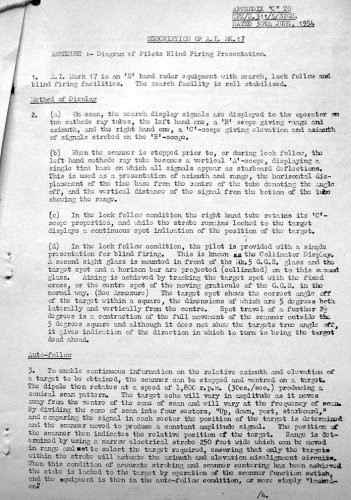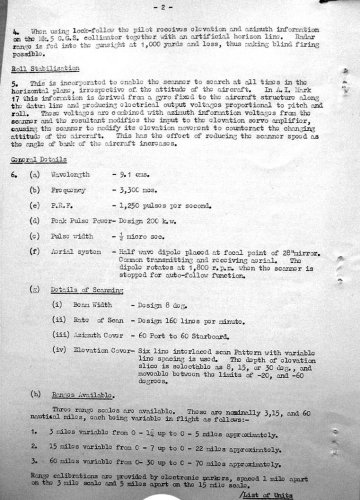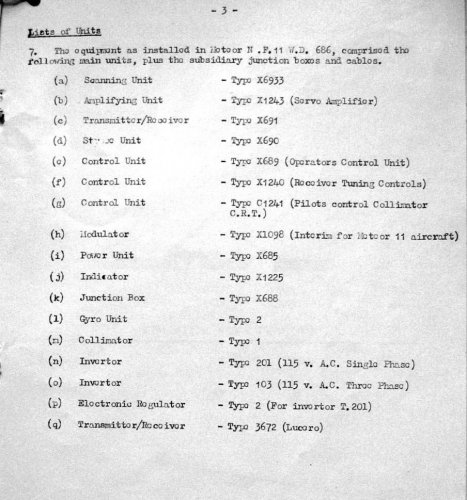(first post, hi everyone!)
I'm currently collecting materials for an article on the Mk. IX. What I have so far...
Development started under Lovell and Williams in 1941 as a direct modification to the Mk. VII/VIII. Lovell was pulled off to work on H2S in december, officially leaving 1 Jan 1942. His place was taken by Downing, and apparently there was little effect on the timelines.
By mid-42 the system was entering the final stages of development. It was at this point that Bomber Command started pressing for the right to use "window". Fighter Command pushed back, noting that the Germans would figure it out instantly and would return the favour, potentially opening the UK to night attack again.
PO Jackson (IIRC) was put in charge of figuring out what window would do to the Mk. VIII. In multiple tests through September and on he noted that it was possible to slightly modify the displays to make it clear what was window and what wasn't. Much of this had to do with the movement of the blips - window stops dead after being dropped, so it approaches you much faster than a bomber that's continuing to fly away from you.
This led to the idea that the Mk. IX might be naturally immune to window. After locking on it gated the ranges, so returns travelling past the gates too quickly would simply disappear, leaving on the bomber and perhaps some momentary blips from the window. Jackson tested the Mk. IX, and to everyone's dismay it did precisely the opposite, and locked onto the window. Once that happened, finding the bomber again was almost impossible, especially if it was at long range and merging with the ground returns.
Downing was convinced this was an easy fix, simply adjusting the range gates to be more tightly locked on the range, so window would drop past the gate almost instantly. He had the modifications completed by December and they went to test them. While Jackson dropped window from one Beaufighter, Downing was in another working the Mk. IX. Both were intercepted by Spits; Jackson made it back but Downing crashed into the sea.
Development was picked up under another leader (Bowen?), but the loss of the only prototype was a major problem. By the time things were moving along again in 1943, the SCR-720 had been tested by Jackson and found that it's spiral-scan display made picking out the bomber somewhat easier. A big order for the "Mk. X" followed, and window was cleared for use.
I have seen statements that the AI.17 was the ultimate development of the Mk. IX. However, this is all I've seen - statements. And they are not clear if they mean the 17 is a direct development (with a more powerful mag basically) or is its "spiritual development" in that it also incorporated Mk. IX features. Still researching this.



